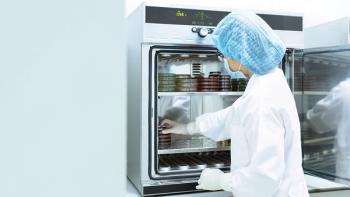
- BioPharm International-05-01-2020
- Volume 33
- Issue 5
Is the 2006 Technical Document Still Relevant for Today's Closed Aseptic Processing Equipment?
Questions and answers about contemporary closed-system design criteria for aseptic processing equipment
Given the disparity between the principles of closed systems and some current practices, it is useful to examine key aspects of closed system design and operation and ask: is the 2006 definition of closed systems still applicable today, given improvements that have been made in the technology (1)? Doing this reinforces the fact that 2006 document was broad enough to embrace a variety of systems, and no changes are needed to accommodate today’s technologies. Consider the following questions.
What is a closed system isolator? It is a decontaminated (internal sterilization of all surfaces is optional) air-filled enclosure, which is designed to provide and maintain a physical barrier between the interior and exterior at all times. A pressure differential is maintained during decontamination and use. This would include isolators that are equipped with gloves, but exclude those where materials and component ingress and egress are managed by air pressure differentials (2).
Is sterilization necessary for non-product contact surfaces of a closed system isolator? It’s not required, but preferred when viable monitoring is no longer performed. When the entire interior is sterilized, then the closed isolator is identical in process capability to a closed stainless-steel vessel.
Are high efficiency particulate air (HEPA )filters sufficient to assure the integrity of a closed system isolator? HEPA filters can provide sterile air (or other internal gas [e.g., nitrogen]). Integral HEPA filters remove microorganisms quantitatively.
Does unidirectional air provide any benefit in a closed system isolator? No. Unidirectional air is a carryover from manned cleanrooms where its purpose is to direct air flow from the supply past the cleanest environment (where sterile materials are exposed) past dirtier environments (where personnel are present) on its way to the air return (3). In a closed system isolator, there is no reason to require use of unidirectional air flow because all internal surfaces can be sterilized, something that is not possible in a manned environment and the predominant contamination source, personnel, are excluded .
Is viable environmental monitoring inside a closed system beneficial? No. Properly designed and maintained closed systems do not require internal viable monitoring. Its inclusion only adds risk due to added system complexity and invasive manipulations, and thus should be avoided.
Is non-viable environmental monitoring inside a closed system useful? Depending on internal processes and equipment, it can be useful to confirm that these are not contributing particles to the materials. It can also serve as a more immediate indication that system integrity has been lost. It would only be appropriate, however, in systems that contain air (or other gases).
If the closed system is pressurized relative to the external environment, how important are leaks? Leaks from clean (i.e., inside the closed system) to less clean (i.e., external to the closed system) environments do not present a risk. There is no evidence that microorganisms and particles can enter against an outward flow. This is a core premise in all manned aseptic processing operations. Periodic leak testing is a closed system requirement to assess integrity over time and identify performance decay.
Does the external environment in which a closed system is located have significant impact? No. If the system is compromised, it has failed and action is required regardless of the background environment. Counterintuitively, fewer controls on the exterior environment can facilitate the detection of contamination because a breach may result in a greater impact on the interior, thereby shortening response time and facilitating corrective action (4).
References
1. J. Akers, and J. Agalloco, PDA Journal of Pharmaceutical Science and Technology, 54(2), p.110-111, 2000.
2. J. Agalloco, Pharmaceutical Manufacturing, 15(4), p. 34, (2016)..
3. ISPE, Baseline Guide, Biopharmaceutical Manufacturing Facilities, Second Edition, November 2013.
Articles in this issue
over 4 years ago
Considerations for Closures in Cold Storageover 5 years ago
Fluid Handling Considerationsover 5 years ago
How Fast Is Too Fast?over 5 years ago
Building Better Bioassaysover 5 years ago
Modern Drug Manufacturing Key to COVID-19 Responseover 5 years ago
Starting a Career in the Bio/Pharmaceutical Industryover 5 years ago
Good Automation Practices for Remote Operationsover 5 years ago
Mass Flow Controllersover 5 years ago
Pre-Packed ColumnsNewsletter
Stay at the forefront of biopharmaceutical innovation—subscribe to BioPharm International for expert insights on drug development, manufacturing, compliance, and more.


